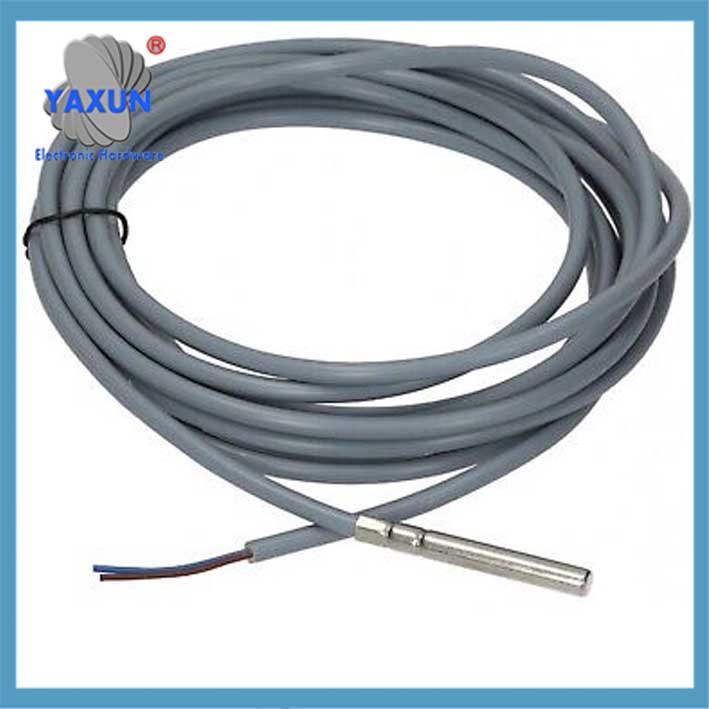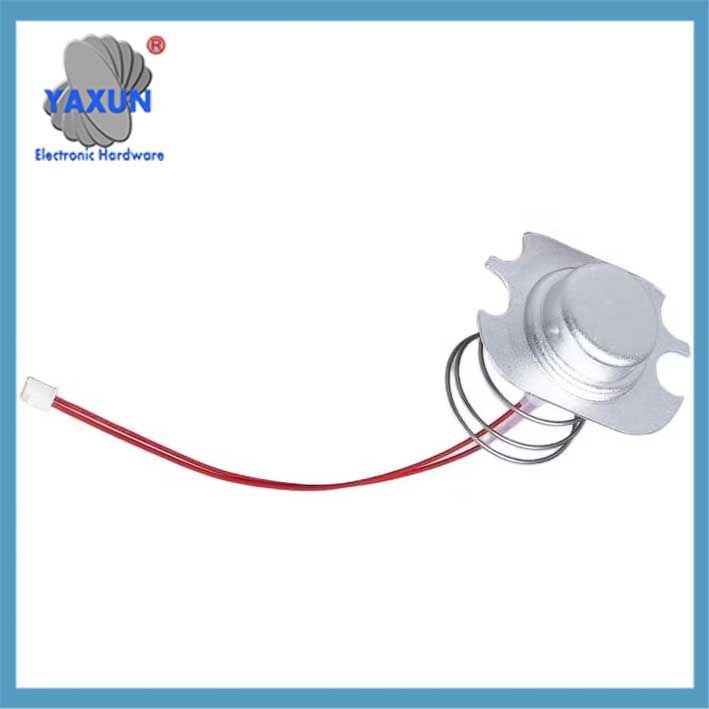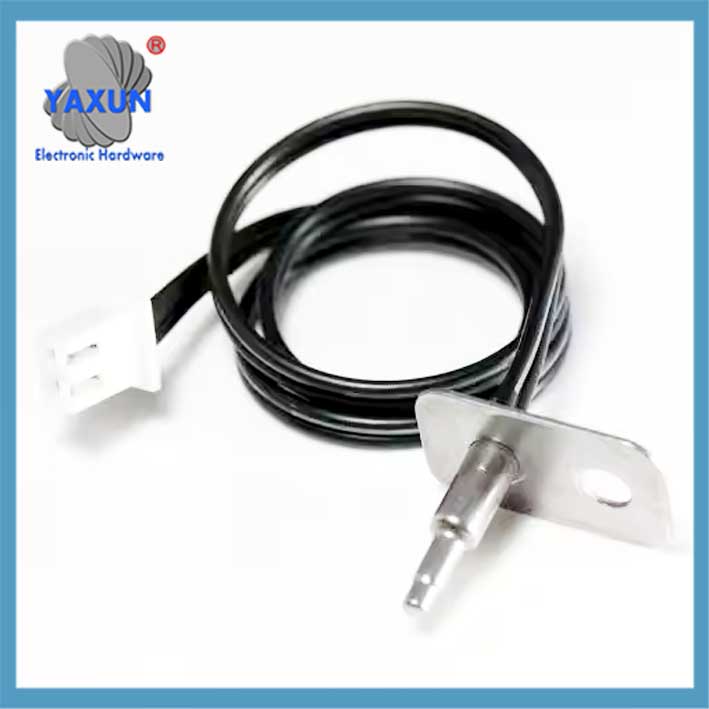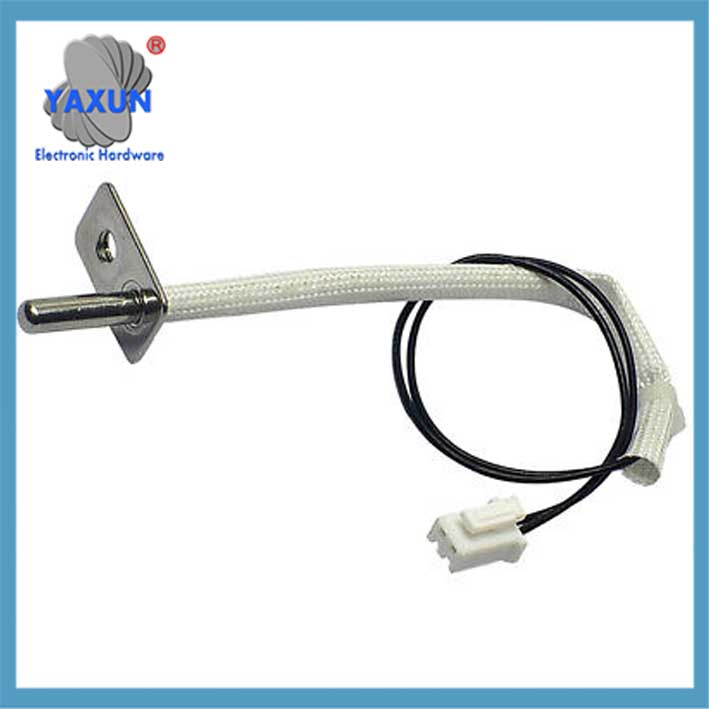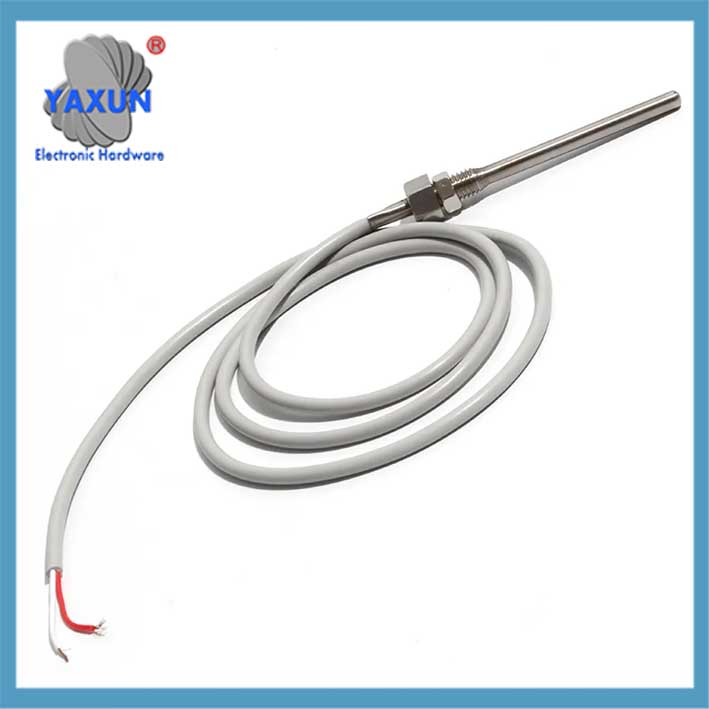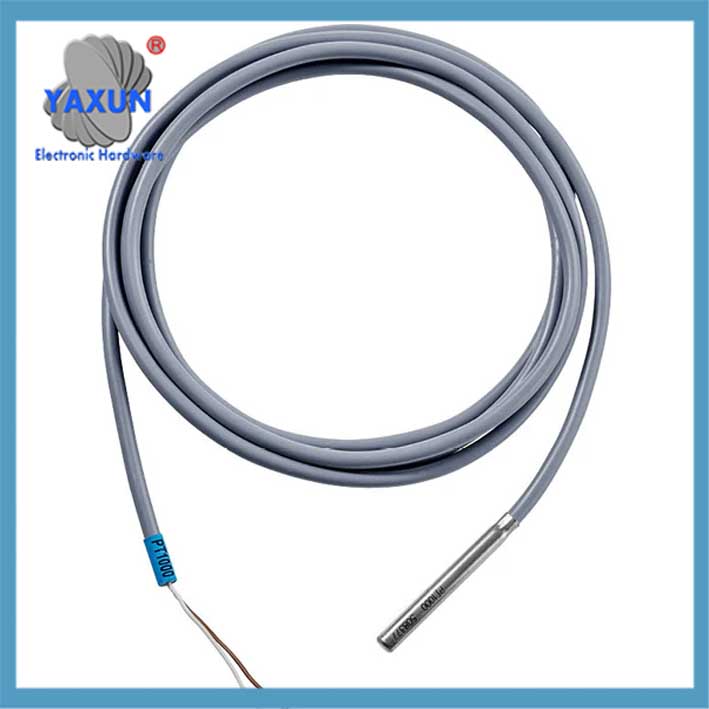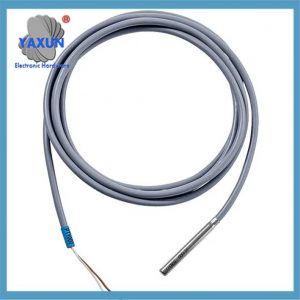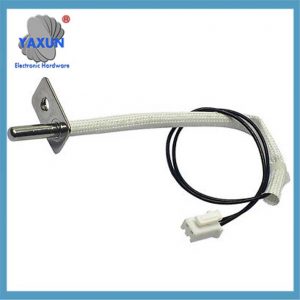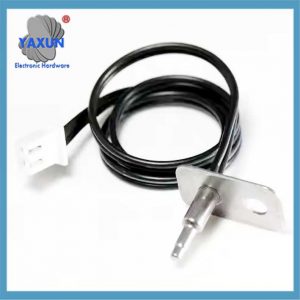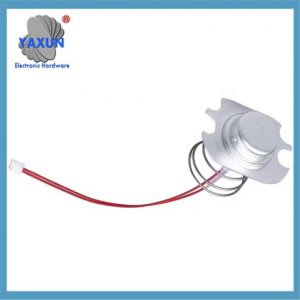หมวดหมู่สินค้า
- เบรกเกอร์ความร้อน 20
- ที่ยึดกล่องฟิวส์ 36
- เซ็นเซอร์อุณหภูมิ 67
- สวิตช์ความร้อน 64
- ฟิวส์รถยนต์ 19
- สลักเกลียวลงฟิวส์ 7
- ฟิวส์ความร้อน 32
- ฟิวส์ยึดพื้นผิว 12
- เทอร์มิสเตอร์ 22
- ตัวยึดฟิวส์ PCB Mount 27
- ชุดสายไฟ 6
- ตัวยึดฟิวส์ใบมีด 17
- เทอร์โมสตัท 46
- ฟิวส์ไฟฟ้า 14
แท็กสินค้า
เซ็นเซอร์อุณหภูมิสำหรับเครื่องใช้ไฟฟ้า
Yaxun มีผลิตภัณฑ์เซ็นเซอร์หลากหลายที่ใช้ในเครื่องใช้ในบ้านในสถานการณ์ที่แตกต่างกัน, ให้บริการโซลูชั่นเซ็นเซอร์อย่างเป็นระบบสำหรับเครื่องใช้ในบ้านอัจฉริยะ. เซ็นเซอร์เหล่านี้แปลอุณหภูมิเป็นข้อมูล, การเปิดใช้งานการควบคุมและการตรวจสอบที่แม่นยำสำหรับแอพพลิเคชั่นตั้งแต่กระบวนการอุตสาหกรรมไปจนถึงอุปกรณ์สมาร์ทโฮม.
Temperature sensors are sensing devices that detect and measure the heat and coldness used in electrical appliances and convert them into electrical signals. เซนเซอร์วัดอุณหภูมิมีหลายประเภท, which are mainly divided into four categories: thermocouple sensors, thermistor sensors, resistance temperature detectors and IC temperature sensors. ในหมู่พวกเขา, IC temperature sensors include analog output and digital output.
What are some examples of temperature sensors being used in daily life?
Temperature sensors have many applications in life, เช่น:
ในเขตข้อมูลยานยนต์, temperature sensors are used to detect engine temperature, อุณหภูมิก๊าซไอดี, อุณหภูมิน้ำเย็น, อุณหภูมิเชื้อเพลิง, อุณหภูมิตัวเร่งปฏิกิริยา, ฯลฯ. to ensure the performance and safety of the car.
ในเครื่องใช้ในครัวเรือน, temperature sensors are used to control the water temperature of washing machines, อุณหภูมิเย็นของตู้เย็นและเครื่องปรับอากาศ, the heating temperatures of microwave ovens and sterilizing cupboards, ฯลฯ, to improve the efficiency and comfort of appliances.
ยา, temperature sensors are used to measure the body temperature of the human body, อุณหภูมิการจัดเก็บและการขนส่งของยา, the operating temperature of medical equipment, ฯลฯ, to ensure the accuracy and safety of medical treatment.
In the construction industry, temperature sensors are used to monitor temperature changes during the condensation and hardening process of concrete to prevent cracks and structural damage.
One of the applications of importance is: ในเขตข้อมูลยานยนต์, the engine intake air temperature sensor (IAT) is a common NTC thermistor sensor that is used to measure the temperature of the air or gas mixture entering the engine cylinder. This parameter plays an important role in calculating the air-fuel ratio, fuel injection volume, ignition time, ฯลฯ, and affects the engine’s power output, fuel consumption, emissions and other performance indicators. If there is a fault or error in the IAT sensor, it may cause engine vibration, knocking, misfire, power loss and other problems. ดังนั้น, the IAT sensor is very important for the normal operation of the car.
What types of temperature sensors are there and how do they work?
There are several types of temperature sensors:
Thermocouple sensor: Uses the thermal electromotive force generated at the junction of two different metals to measure temperature. This phenomenon is called the Seebeck effect. It has a wide temperature range and a simple structure, but its accuracy is low and requires cold end compensation.
Thermistor sensor: uses the resistance of semiconductor materials to change with temperature to measure temperature. It has high sensitivity and fast response speed, but has poor linearity and is affected by the self-heating effect.
เครื่องตรวจจับอุณหภูมิความต้านทาน (RTD): Uses the resistance of pure metal to change with temperature to measure temperature. This phenomenon is called the resistance effect. It has high precision, good linearity and strong stability, but it has high price and large thermal inertia.
IC temperature sensor: uses components or structures in an integrated circuit to measure temperature. This phenomenon is called the PTAT effect. The output signal can be analog or digital, and has the advantages of small size, low power consumption, and easy interface.
Infrared temperature sensor: uses the infrared rays radiated by an object to measure its surface temperature, which is a non-contact temperature measurement method. This phenomenon is called the blackbody radiation effect. Suitable for moving objects, high temperature objects or objects that are difficult to reach.
What are the packaging forms of temperature sensors?
The packaging forms of temperature sensors are as follows:
Ordinary metal straight tube package temperature sensor: This type of temperature sensor package is mostly used in simple installation environments. According to the measured temperature range, it is divided into high temperature temperature sensor, medium temperature or ordinary temperature sensor and low temperature temperature sensor. The high temperature measurement temperature can reach the long-term operating temperature of 400°C, and the low temperature temperature range can reach -200°C.
Threaded package temperature sensor: This kind of temperature sensor is mostly used in environments where a fixed temperature sensor is required. The threads used are basically standard threads. Select the size of the thread according to the temperature sensor installation location.
Flange-mounted large temperature sensor: This type of temperature sensor is mostly used on large pipelines or equipment.
Wall-mounted temperature sensor: This kind of temperature sensor is mostly used indoors or in cabinets. It is simple to install and has a display screen that can also be read on site.
Temperature sensor with various plugs at the end: This kind of temperature sensor can be installed with various plugs at the end for convenient installation, eliminating the trouble of wiring, plug and play.
IC packaged digital temperature measurement chip: This temperature sensor uses components or structures in an integrated circuit to measure temperature. The output signal is digital and has the advantages of small size, low power consumption, and easy interface.
What aspects should be considered when choosing a temperature sensor?
When choosing a temperature sensor, you should consider the following aspects:
Linear range: ตัวอย่างเช่น, whether the measured object is solid, liquid or gas, stationary or moving, large or small, high or low temperature, easy to contact or difficult to contact, ฯลฯ. These characteristics will affect the type, โครงสร้าง, ขนาด, material and installation method of the temperature sensor.
ความมั่นคง, response time: ตัวอย่างเช่น, whether the measurement method is contact or non-contact, whether the measurement requirements are recording, alarming, or automatic control, whether long-distance measurement and transmission are required, ฯลฯ. These requirements will affect the output signal, ความแม่นยำ, stability, response speed and linearity of the temperature sensor.
Sensitivity: ตัวอย่างเช่น, whether the working environment is indoors or outdoors, whether there are strong electromagnetic interference, แรงดันสูง, ความชื้นสูง, high corrosion and other harsh conditions. These conditions will affect the durability, anti-interference ability, protection level and safety of the temperature sensor.
Cost and benefit: ตัวอย่างเช่น, the price, lifespan, maintenance cost and use effect of the temperature sensor, ฯลฯ. These factors will affect the economy and reliability of temperature sensors.
ติดต่อเรา
กำลังรออีเมลของคุณ, เราจะตอบกลับคุณภายใน 12 ชั่วโมงด้วยข้อมูลอันมีค่าที่คุณต้องการ.
 English
English العربية
العربية Български
Български 粤语
粤语 中文(简体)
中文(简体) 中文(漢字)
中文(漢字) Nederlands
Nederlands Suomi
Suomi Français
Français Deutsch
Deutsch Ελληνικά
Ελληνικά Magyar
Magyar Italiano
Italiano 日本語
日本語 한국어
한국어 Polski
Polski Português
Português Română
Română Русский
Русский Slovenščina
Slovenščina Español
Español Svenska
Svenska ภาษาไทย
ภาษาไทย Türkçe
Türkçe Tiếng Việt
Tiếng Việt
